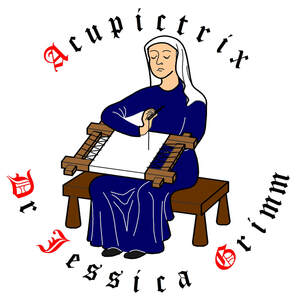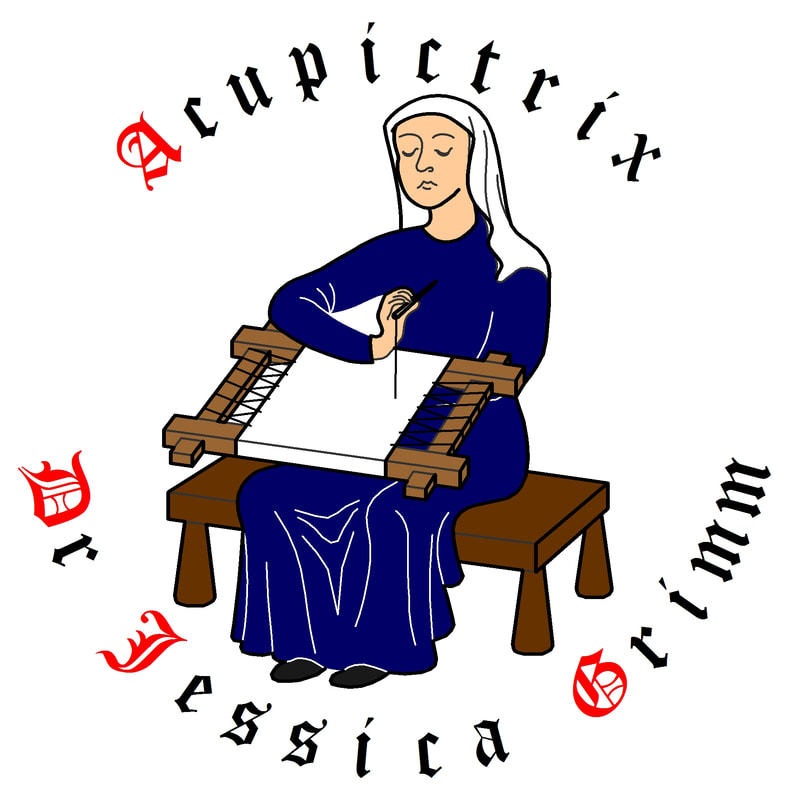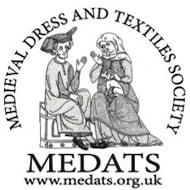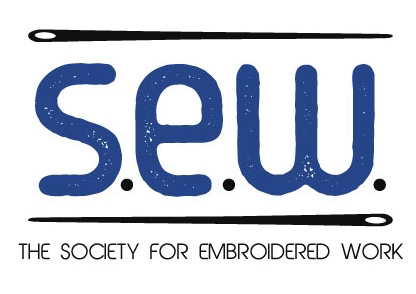Gold threads and paintings in silk: Velvets and embroidery from the Gothic era and the Renaissance30/9/2019 Last week I was finally able to visit this magnificent embroidery exhibition in the Castello Buonconsiglio in Trento, Italy. It is on until the third of November and I urge you to visit if at all possible as it is as important as the Dutch exhibition in Utrecht in 2015 or the Opus Anglicanum exhibition in London in 2016. And yes there is a wonderful catalogue, but just as the Dutch did, the Italians thought it a brilliant idea to publish the scientific papers on these extraordinary pieces in their own language. At 423 pages, it will take me aeons to translate ... However, it is packed full with stunning pictures of the embroidery. Including many close-ups. Together with the 400+ pictures I took during my three-hour visit, it will be a treasure trove for years to come! You will hopefully understand that I can't publish all the 400+ pictures in this one blog post. Instead, I will concentrate on three (well actually four) extraordinary pieces that were on display. First up is a chasuble made in the middle of the 15th century in Venice. Why did I pick this particular one to show you? If you are used to the orphreys from the Low Countries, these Venetian examples look very different. They show the same main principle: saint in front of some fancy architecture. But the embroidery techniques used are somewhat different. The examples from the Low Countries use much more gold thread for the architectural backgrounds. And their linen background is fully covered with embroidery. Not so in this piece: the background is stitched on green silk. They look airy and light; a typical sign of the art of the Renaissance. The examples from the Low Countries are in comparison much stiffer and heavy. The figures themselves are also embroidered in a different way than the majority of the pieces from the Low Countries. As in the Low Countries, the figures are embroidered onto a linen base. However, the embroidery technique used is a form of shaded laid-work using untwisted coloured silk for the undergarments. Simple couching of pairs of fine passing thread for the cloak and fine silk shading for the faces and hands. The figures in the orphreys from the Low Countries are mainly done in splendid or nue. Unfortunately, the stiffness of the linen base in comparison to the lightness of the green silk makes the piece pucker. Not easy to photograph! Most incredibly, this chasuble is still worn every 3rd of May on the feast of the Apostles Philip and James! Next up is an example of a chasuble which fascinates me hugely. This is serious stumpwork made at the start of the 16th century somewhere in the German-speaking parts of Central Europe. You come across this type regularly in this part of the world (there are in fact two more in the exhibition), but this is an exceptionally stunning piece with highly sculptured figures. The faces are incredible! And look at Jesus's curly hair. A theory put forward by Aleth Lorne (2015, p. 99-102) to explain these highly sculptural pieces is that the embroiderers and the woodcarvers in the German-speaking parts of Central Europe influenced each other in their search for the three-dimensional rendition of the world. Both craftsmen were often part of the same guild and probably used the same designs made by yet another craftsman. These pieces were so well-known that they are recognisably depicted on paintings from the same period, but not necessarily from the same area. People were clearly fascinated by these pieces. Particularly good examples further adorned with thousands of fresh-water pearls can be seen in the treasury of the Basilica of Mariazell in Austria. There is just one thing about this chasuble which I do not understand. See the bottom? Someone brutally cut through Saint Joachim when the taste in chasuble shapes changed from wide to a violin-case. This probably happened in the 17th century (Stolleis 2001, p. 29). I hope the scissors wore out :). And last but not least, I am going to show you two dalmatics (vestments worn by the deacon) made in the Netherlands at the start of the 16th century. These new acquisitions by the museum lead to this exquisite exhibition. They are displayed in the last room together with three other chasubles. And the best thing is: they are not behind glass! You can get up close and personal with them :). The orphreys on these dalmatics are of the typical type seen on vestments from the Low Countries from this era (you now clearly see the difference with the first chasuble I showed you which was made in Venice). Completely covered in embroidery and featuring beautiful or nue on the figures. The pieces are quite similar to the vestments made for David of Burgundy, bishop of Utrecht in the 15th century. They are in fact so similar that I for a moment thought that they were the ones made for David.
The vestments made for David were probably embroidered by an atelier in Utrecht. These slightly later dalmatics could either be embroidered in Amsterdam or indeed Utrecht. I got the giggles when I saw that the museum Castello Bonconsiglio thinks that Amsterdam and Utrecht are situated in Flanders. Not quite. But close :). Sources: Dal Pra, L., M. Carmignani & P. Peri (2019): Fili d'oro e dipinti di seta. Velluti e ricami tra Gotico e Rinascimento. Castello del Buonconsiglio. Lorne, A. (2015): Borduurwerkers en beeldhouwers in de Nederlanden en het Rijnland in de late Middeleeuwen. In: M. Leeflang & K. van Schooten, Middeleeuwse borduurkunst uit de Nederlanden, Museum Catharijneconvent Utrecht, pp. 95-103. Stoleis, K. (2001): Messgewänder aus deutschen Kirchenschätzen vom Mittelalter bis zur Gegenwart, Regensburg. P.S. If you like what you see, please consider making a donation using the PayPal button in the right-side column. Hugely appreciated!
6 Comments
|
Want to keep up with my embroidery adventures? Sign up for my weekly Newsletter to get notified of new blogs, courses and workshops!
Liked my blog? Please consider making a donation or becoming a Patron so that I can keep up the good work and my blog ad-free!
Categories
All
Archives
July 2024
|
Contact: info(at)jessicagrimm.com
Copyright Dr Jessica M. Grimm - Mandlweg 3, 82488 Ettal, Deutschland - +49(0)8822 2782219 (Monday, Tuesday, Friday & Saturday 9.00-17.00 CET)
Impressum - Legal Notice - Datenschutzerklärung - Privacy Policy - Webshop ABG - Widerrufsrecht - Disclaimer
Copyright Dr Jessica M. Grimm - Mandlweg 3, 82488 Ettal, Deutschland - +49(0)8822 2782219 (Monday, Tuesday, Friday & Saturday 9.00-17.00 CET)
Impressum - Legal Notice - Datenschutzerklärung - Privacy Policy - Webshop ABG - Widerrufsrecht - Disclaimer






 RSS Feed
RSS Feed